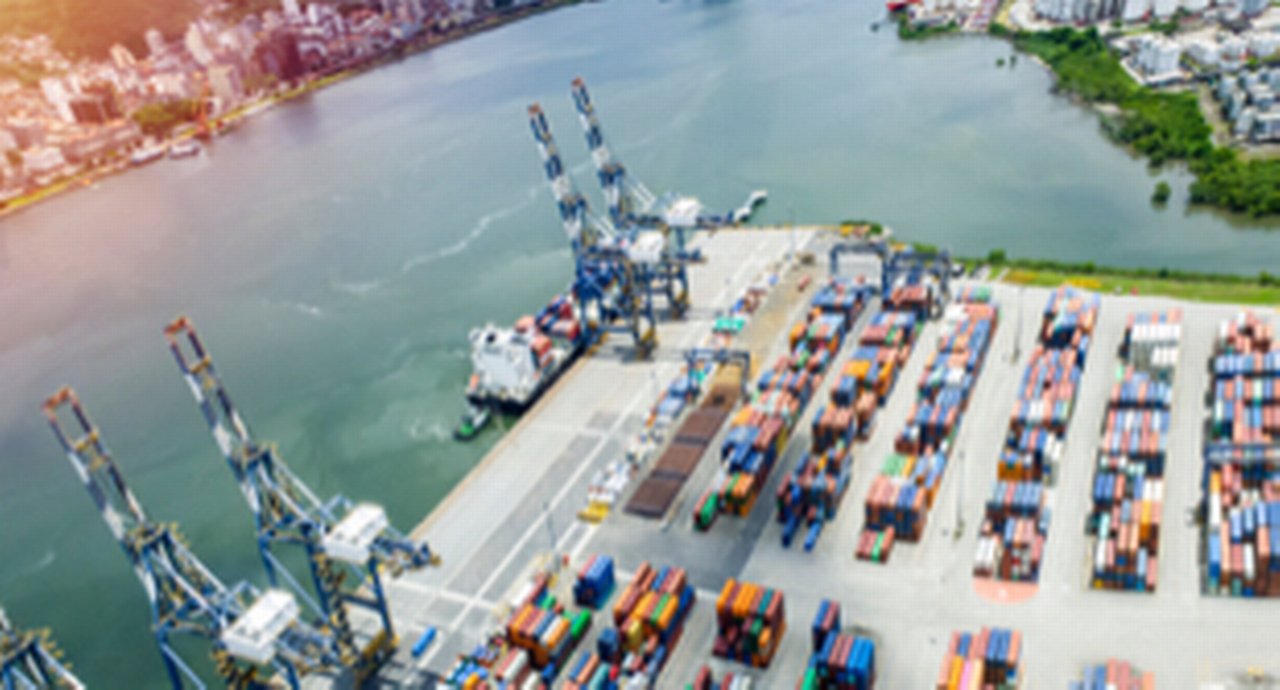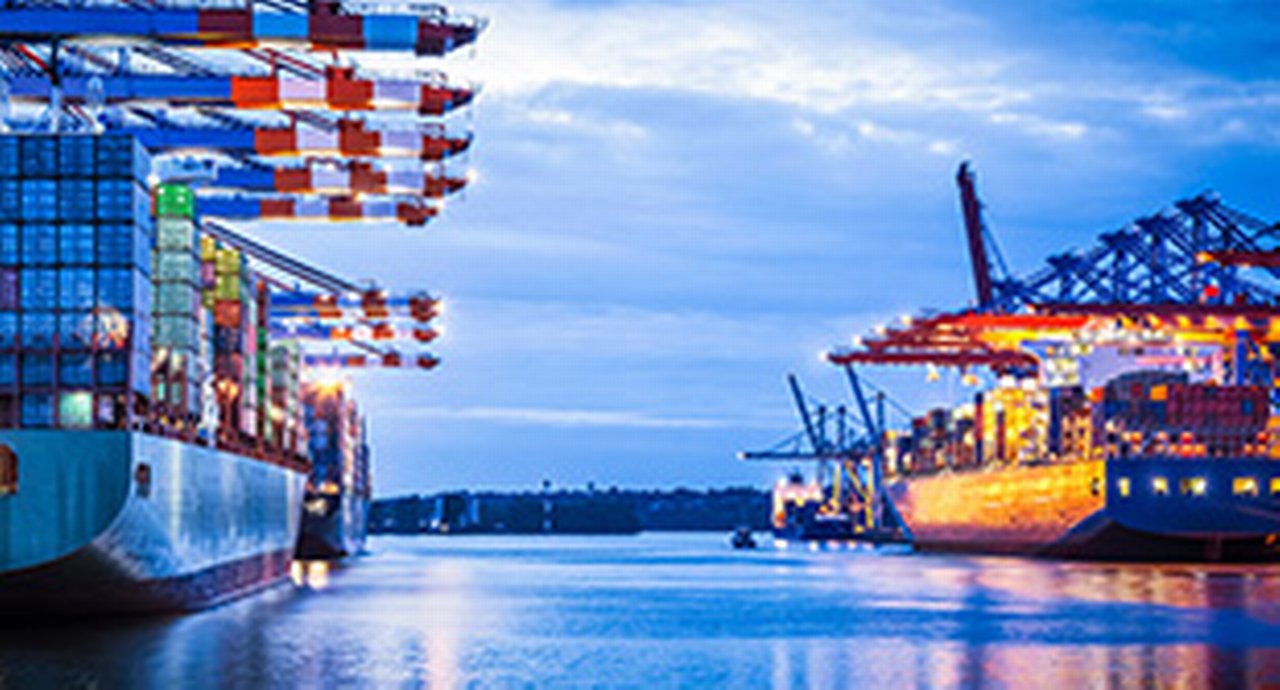18 November 2021
Christina Gnad took up the reins of Deutsche Bank’s Americas trade finance and lending business in August 2021. As the world gets back to business after the Covid-19 economic shock, she talks to trade journalist Ivan Castano Freeman about trade flows, scale, and repairing supply chains
MINUTES min read
“A trade person through and through.” That’s how Christina Gnad, Deutsche Bank’s new Head of Trade Finance and Lending Americas, describes herself.
“I love working with clients, looking at the goods and the trade flows,” says Gnad, whose 20-year career began in the UK and Germany and led to regional and global management roles based in Europe before she took up her new post in New York.
Gnad’s expansive global career, coupled with her passion for trade finance had the effect of leading her to the US, and is what drives her to engage with clients in the Americas. An important part of her mission is to seek new ways of addressing client needs especially at this time as companies begin to re-navigate their international supply chains following the disruption brought by the pandemic and the increased ESG scrutiny of provenance.
Another prong of Gnad’s Americas mandate is intensifying relationships with export credit agencies (ECAs) and multilaterals to help fund Latin America’s growing social and environmental infrastructure needs.
In addition to measures that develop trade, safety and security are an additional vital area of focus. This means ensuring the Bank has the most efficient know-your-customer (KYC) monitoring tools, making it possible to speed up lending decisions. The technological innovation to make this possible will be on Gnad’s agenda as she prepares her team for the challenges ahead.
Helping clients respond to the US rebound
Gnad’s immediate focus is on helping American clients find new and innovative ways to finance rising export and import demands as global trade bounces back from last year’s contraction. 1 Some analysts estimate flows will rise as much as 30% this year. 2
“We are seeing a strong rebound after last year’s Covid-19 dip in which we came to a full stop during several months,” Gnad says. “The main growth is coming out of Asia, which was first to come back from the pandemic, but also from the US as supply chain deliveries begin to recover from a period of severe disruption where some of the most basic consumer goods have not been available.”
Gnad expects the US trade finance market to stage a “significant double digit rebound” amid surging imports from Asia and on the back of strengthening consumer demand and firming trade with Latin America.
By mid-year, US imports had soared, widening a stubborn trade deficit 3 — mainly with top trading partner China — that’s likely to continue in the foreseeable future, even as the world’s two super-powers remain caught in a trade war, Gnad predicts.
She also sees President Joe Biden’s US$1trn infrastructure package, which cleared another obstacle with the approval of the House of Representatives, fueling imports “around telecoms, technology, construction, energy and infrastructure.”
As part of the deal, Washington will pour US$73bn into upgrading America’s ageing power infrastructure and building thousands of miles of new transmission lines to expand the renewable energy grid. Gnad expects that this will promote imports of equipment and machinery — notably linked to offshore wind farms, solar technology and hydrogen power. The first major wind farm approved by the US government in May 2021 was Vineyard Wind, based in Massachusetts. Clearly, European players have a role here – this deal, which reached financial close in September, was a joint venture between Copenhagen Infrastructure Partners and Avangrid of Iberdrola. 4
The considerable geographical disparity between Germany and the US also contributes to the expansion of Gnad’s remit. The US measures roughly 9.8 million km2 compared to Germany’s 357,000km2. Transporting goods around the 50 states presents difficulties on a greater scale. In addition, she notes, “when we talk about the US power grid versus Germany’s, we talk about its massive size and different geographical and logistical challenges that need to be overcome. For instance, if we need to move a wind tower in the US from point A to B, this can be a much bigger challenge.”
“A lot of companies that source key components from Asia are asking for pointers as they re-evaluate their supply chain relationships”
Advising on sourcing strategies
In the wake of pandemic-initiated bottlenecks and the March 2021 Suez Canal blockage, 5 large US manufacturers with key sourcing partners in Asia continue to re-evaluate those partnerships. The goal is to adopt better coping strategies that cushion the impact if similar scenarios crop up in the future.
“A lot of companies that source key components from Asia are asking for pointers as they re-evaluate their supply chain relationships,” Gnad says. “They ask, ‘what can I do to increase my inventory?’ and seek new ideas about inventory management and finance to ensure access to crucial parts within the US in case something similar happens again.”
Gnad’s team analyses a client’s suppliers, what materials and goods they help source and how essential they are, in order to devise innovative financing solutions or risk mitigation techniques.
“Clients are looking for good ideas around certain specific problems,” Gnad says. “We take great pride in having top people on the structuring side who know and understand the markets as well as their rules and regulations.”
As demand for renewal energy financing ramps up, this specific expertise is coming into the team as it expands.
Supporting initiatives in Latin America
Gnad’s remit will also include responsibilities related to Latin America, where the US trades US$500bn to US1trn annually and where demand for social and environmental-infrastructure projects has climbed in Covid-19’s aftermath.
In Latin America, her team is highly engaged with the Export-Import Bank of the US (“Ex-Im Bank”) as well as with a string of regional development institutions in its efforts to finance infrastructure initiatives designed to promote social and environmental needs.
“We have a very active dialogue and quite a lot of structuring coverage in that market. It is a key area where we are putting our energy,” Gnad says. “There is a need for investments, especially around healthcare.”
In this regard, Deutsche Bank is partnering with global ECAs such as Ex-Im Bank across Central and South America in support of needed investments in the local healthcare sector. “Ex-Im Bank is a longstanding and important partner for us to support our US exporting clients as they do business and promote infrastructure investments in Latin America,” Gnad says.
Deutsche Bank is also financing projects in Panama, Ecuador, Peru and Dominican Republic with the support of global ECAs and multilateral development institutions, such as the Development Finance Corporation (DFC) and the Multilateral Investment Guarantee Agency (MIGA), to develop greenhouses, construct access roads between major economies, deploy new climate-resilient infrastructure following major storms, and erect new healthcare facilities.
“Our focus goes beyond KYC. We also do constant back-testing, and we don’t just look at transactions in isolation”
Paring risk
The Americas team will also work to tackle non-financial risk, Gnad says, ensuring Deutsche Bank can identify and prevent suspicious transactions before they settle. “Ensuring we can identify money laundering, or anything related to it is absolutely key,” Gnad says.
Indeed, Deutsche Bank has been stepping up technology investments to detect and track financial crime.
“In my previous role, I ran the global structuring team, managing and understanding risks linked to a transaction and ensuring it was genuine,” Gnad says. “The perspective I have gained from this vital grounding informs how I evaluate risk and forms an integral part of my overall approach.”
The Bank’s monitoring systems are constantly being optimised, she stresses. “Our focus goes beyond KYC. We also do constant back-testing, and we don’t just look at transactions in isolation. If you look at transactions constantly and at different points in time, something that went through the first time may require a closer look the second time.”
Leveraging new technologies
One tracking and tracing technology that institutions are increasingly using — and not just to flag risk — is blockchain or distributed ledger technology (DLT). This technology helps verify and confirm financial transactions on a real-time basis without the need for intermediaries.
“Blockchain offers better scrutiny tools for non-financial risk, helps transactions process quicker and creates transparency around clients with complex global setups,” Gnad explains.
6
But its use case can be somewhat overhyped, she contends. “I am yet to be convinced it’s the only solution to achieve trade finance efficiencies. The majority of trade finance technology still has some way to go before everyone is on one common standard – trade finance is not as straightforward as payments – and we are building new technology that’s not necessarily based on blockchain applications.”
Gnad sees artificial intelligence (AI) as more useful for discrepancy checking and error correction. Global statistics vary but it is estimated that the percentage of documents refused on first presentation ranges between 60–75%, although there are many regional/national differences. 7 “If I have a bot looking at certain standard documents such as a bill of lading, which typically has a similar format and fields, the bot can check and compare the document with other copies to ensure it is correct,” she says, adding that such a review is crucial to curating trade finance paperwork.
“AI bots can digest information from massive data stores, recognise certain patterns and changes, and enable us to give clients better advice,” explains Gnad.
‘At the core of what we do’
However, according to Gnad, none of these technologies elevate the quality of service if bankers lack the necessary enthusiasm to help companies finance trade, Deutsche Bank’s original raison d'être when it was founded in Berlin in 1870.
“Trade finance is at the core of what we do and what every corporation does,” Gnad points out. “If that’s not exciting, what is?”
Summary of recent key Americas trade finance transactions
- US$4.9m financing to the Government of Cameroon, 100% guaranteed by the Ex-Im Bank, in support of preliminary technical design and engineering feasibility studies for the construction and rehabilitation of water treatment facilities across the Southwest Region of the country.
- US$160m financing for extension of Panama Metro Line 1. The deal was categorised as sustainable given that the use of proceeds supported around 300,000 people from remote locations in gaining access to Panama City. Note, this was a term loan, 95% covered by political risk insurance (PRI) (so not ECA)
- €64m financing for maternity hospitals in Province of Cordoba, Argentina. This is one of three deals closed between Deutsche Bank and the Province of Cordoba in support of the healthcare sector in the region. The financing benefited from ECA support (CESCE, Spanish ECA) and PRI cover. This deal won Deutsche Bank’s internal Sustainable Deal of the Year award competition.
Ivan Castano Freeman is a freelance financial journalist
Note: The headline picture from Getty images is of the Iguazu Falls on the Argentine side. Photographed from the Brazilian side.
Sources
1 See https://bit.ly/3HupgZ4 at wto.org
2 See https://bit.ly/3nmX1U7 at unctad.org
3 See https://bit.ly/3cldDFD at bea.gov
4 See https://bit.ly/30v3P9T at cipartners.dk
5 See https://bbc.in/2Z06TtS at bbc.co.uk
6 See Trade finance and the blockchain – three essential case studies at flow.db.com
7 See https://bit.ly/30yCD9S at tradefinance.training

Christina Gnad
Head of Trade Finance and Lending Americas, Deutsche Bank
Trade finance solutions Explore more
Find out more about our Trade finance solutions
solutions
Stay up-to-date with
Sign-up flow newsbites
Choose your preferred banking topics and we will send you updated emails based on your selection
Sign-up Sign-upSubscribe Subscribe to our magazine
flow magazine is published annually and can be read online and delivered to your door in print
You might be interested in
Trade finance and lending
It takes trade to tango It takes trade to tango
Having had its recovery interrupted in 2020, Latin America is looking good for 2021, having achieved some herd immunity with an anti-Covid vaccination push in late H2. Ivan Castano Freeman reports on the outlook for trade finance and lending
Trade finance, Dossier Covid-19
Dealing with supply chain disruptions Dealing with supply chain disruptions
Supply chain disruptions are currently the main source of concern for corporate treasurers, research by Economist Impact shows
Dealing with supply chain disruptions MoreSustainable finance, Trade finance and lending, flow case studies
Baby steps Baby steps
When emerging economies build for the future, they need modern and efficient maternity care. flow reports on why the structured export financing of Argentina’s Hospital Provincial Nueva Maternidad Felipe Lucini was a turning point in sustainable finance



